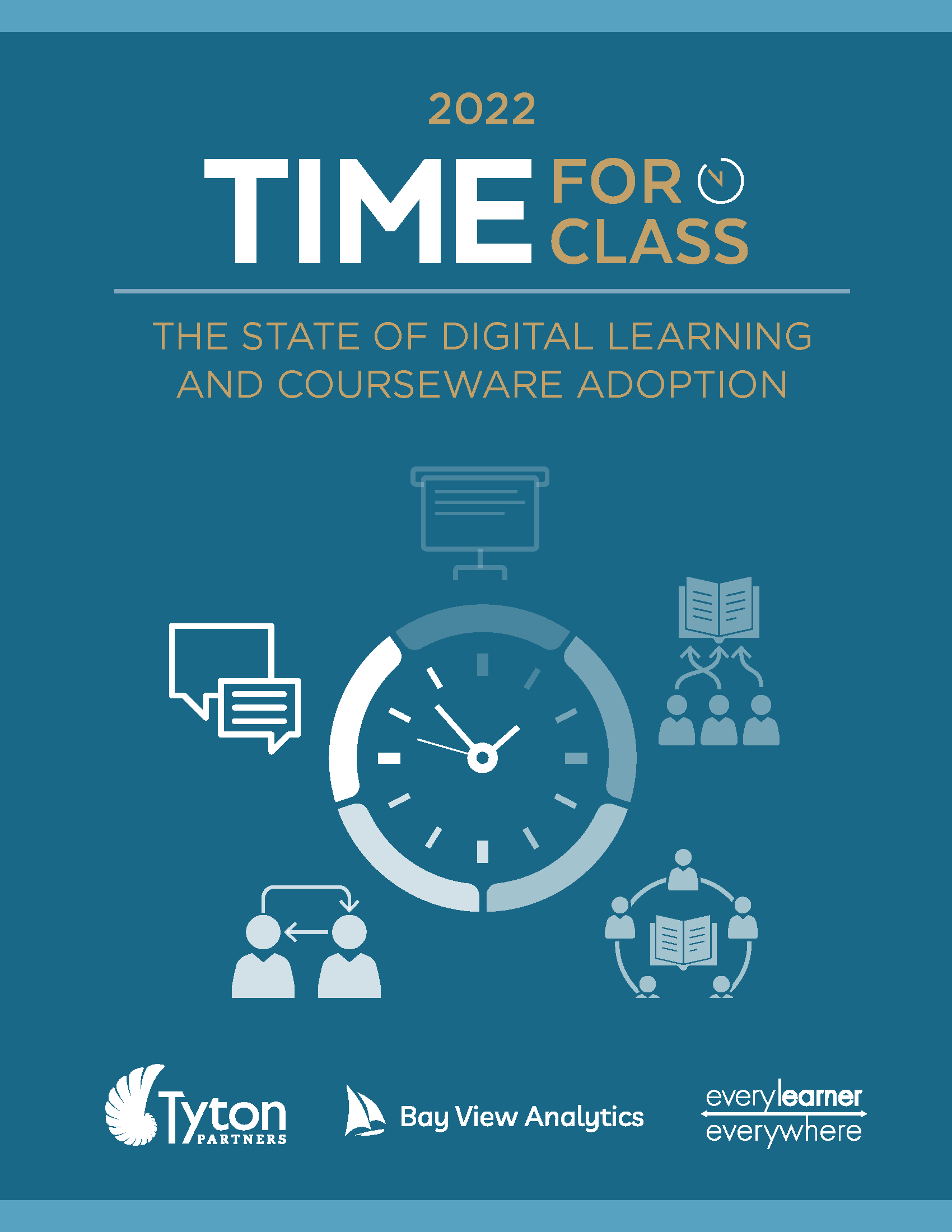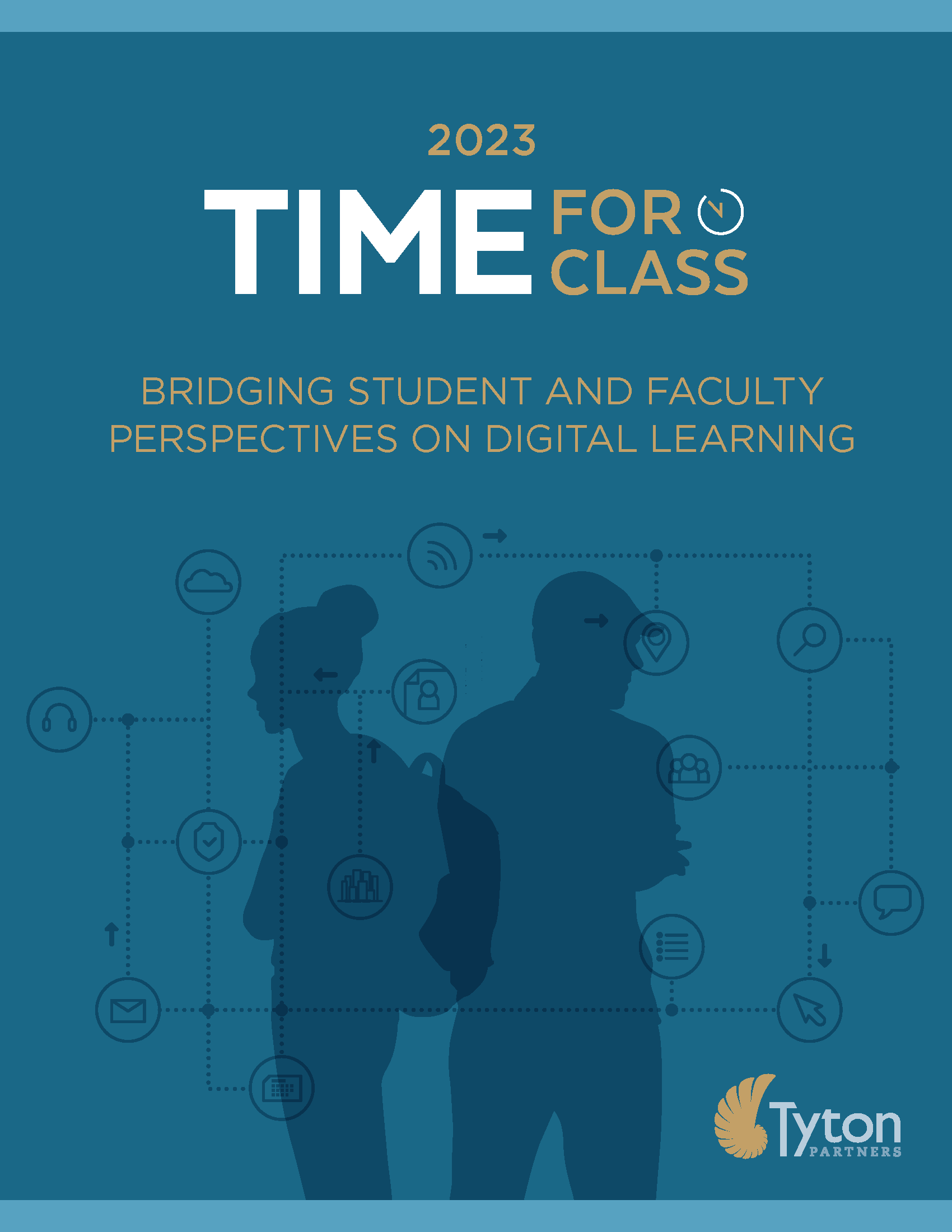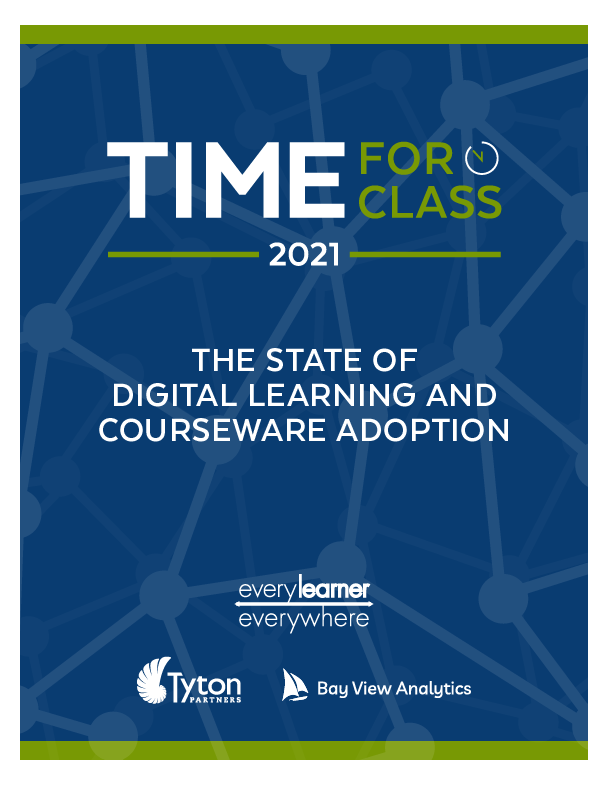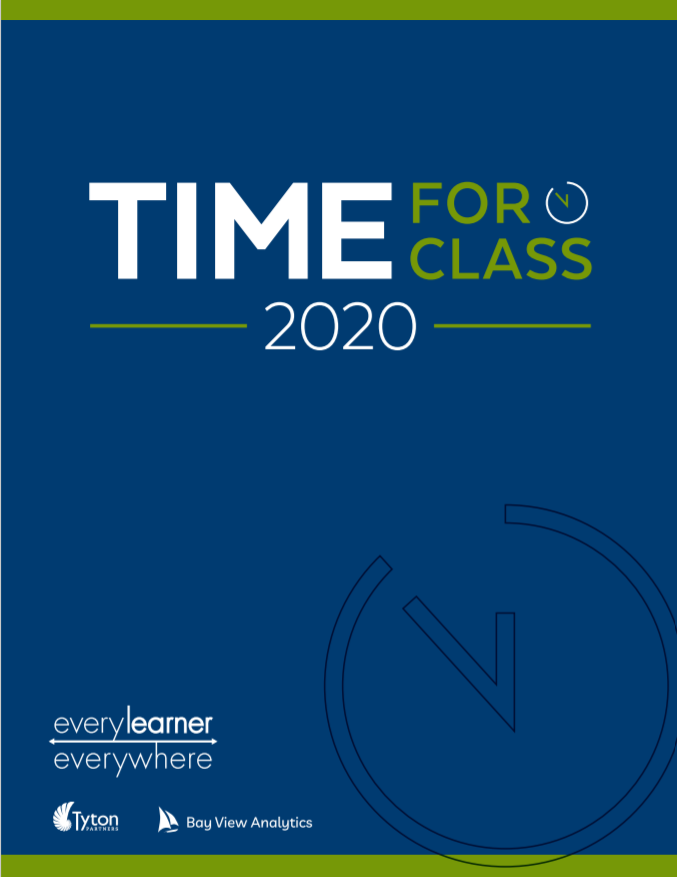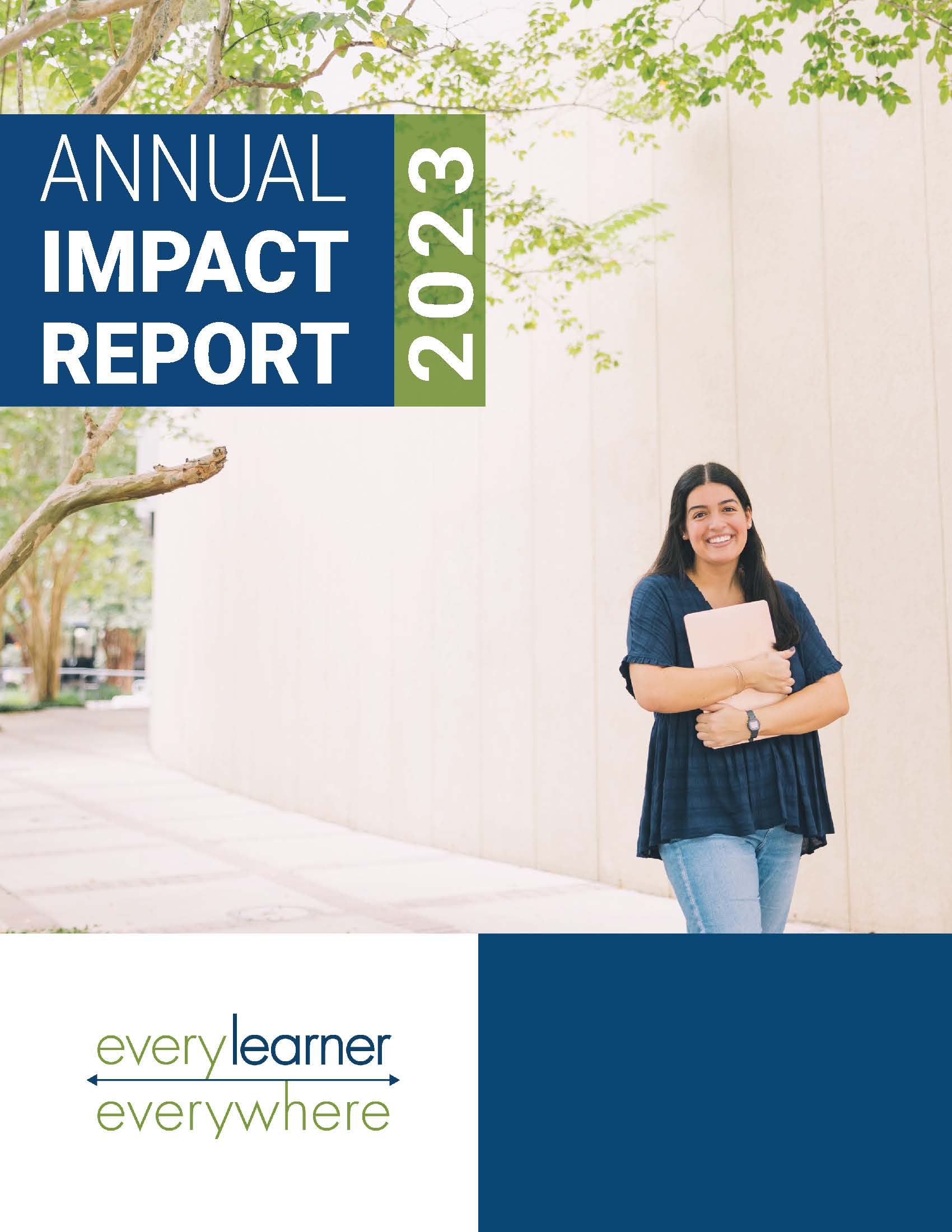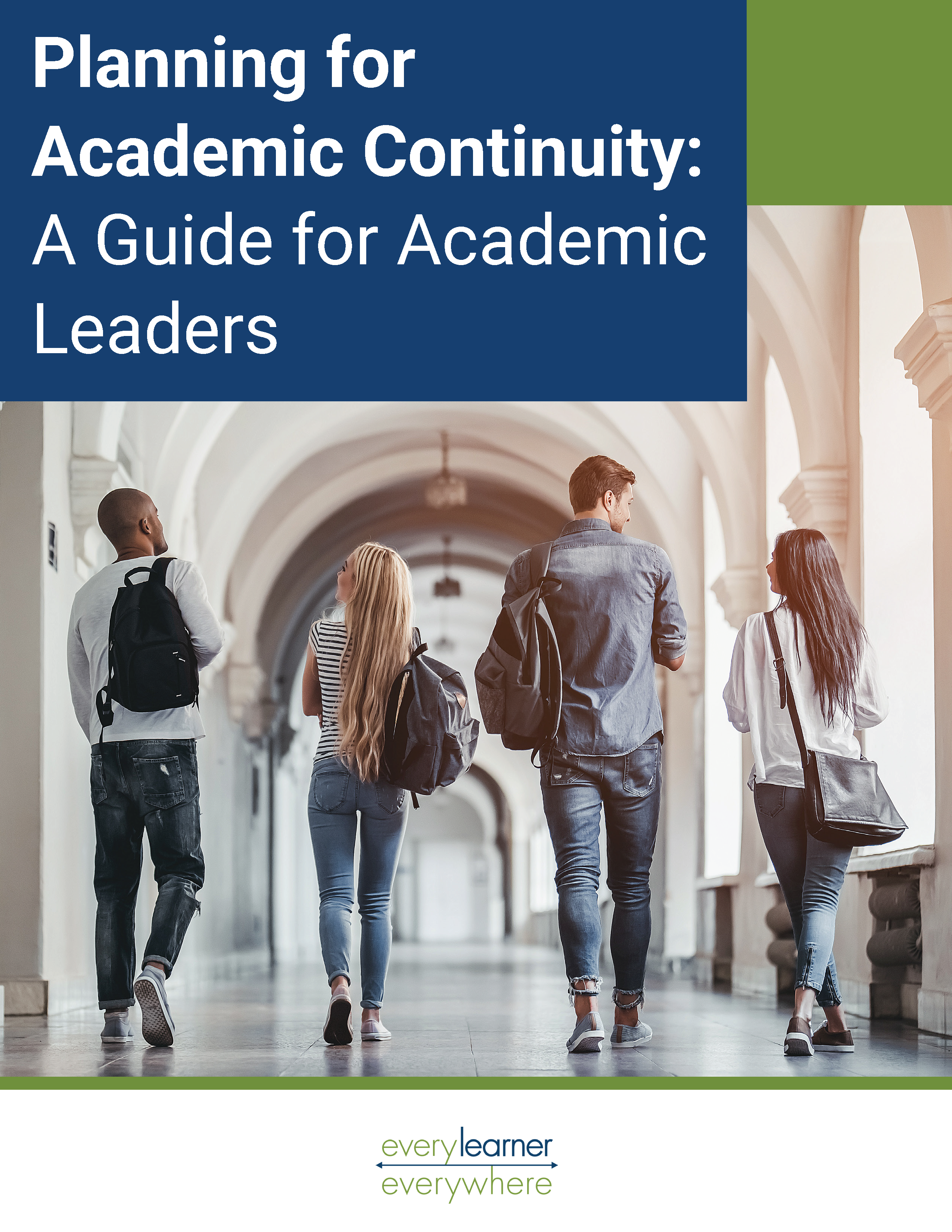The State of Digital Learning and Courseware Adoption
Since 2014, Tyton Partners has monitored the dynamics of the higher education instructional materials and digital learning market to understand the needs of instructors, institutions, and students and to monitor how suppliers are evolving to meet those needs. This 2022 summary provides an updated view of how the pandemic has altered the landscape of teaching, learning, and course materials in higher education.
This report examines how faculty and institutional leaders are using instructional materials to implement teaching practices that can improve student learning and outcomes, especially for students historically underserved by higher education. This report focuses on introductory courses, including gateway courses, which are a “major accelerant of the DFWI rate[1] and serve as a significant barrier to long-term college completion and success.”[2] Black, Latino, and Indigenous students and students from low-income backgrounds are disproportionately impacted by the high DFWI rate in gateway courses. This report reviews how digital learning in high-enrollment introductory courses can enable instructors to incorporate evidence-based teaching practices and work to close equity gaps in courses.
Informing this research are survey responses from approximately 850 administrators and 3,200 faculty at 1,200 unique postsecondary institutions and interviews with over 15 instructional materials and digital learning providers. About 2,200 of our faculty respondents teach introductory-level courses; the report focuses on these instructors because of their role in developing and delivering courses that reach large numbers of students and influence student retention and progression.
Most respondents report using digital learning tools to support teaching and learning in their courses. Digital tools such as courseware generally enable faculty to implement teaching practices associated with greater student learning. However, only 45% of the faculty respondents report that they receive sufficient support in selecting, implementing, or using courseware, indicating opportunities for suppliers and institutions to improve faculty support.
In this context, this paper addresses the following critical questions to expose information so that providers of course tools and materials can better serve faculty, students, and institutions.
- What unique challenges do faculty teaching introductory-level courses face, and what tools and teaching practices are they adopting in the classroom to achieve equitable outcomes?
- What role can high-quality digital learning tools play in supporting instructors and students in achieving more equitable outcomes?
- How can institutions and suppliers work together to support the implementation of high-quality digital learning approaches that help achieve equitable outcomes?
[1] “The percentage of students in a course or program who get a D or F grade, withdraw (‘W’) from a course, or whose progress in the course is recorded as incomplete (‘I’)”
[2] Kwak, J. (2020, November). Concerned with Equity in Higher Ed? Start with the DFWI Rate. Every Learner Everywhere. Retrieved June 16, 2022, from https://www.everylearnereverywhere.org/blog/equity-and-dfwi-rate-or-dfw-rate



